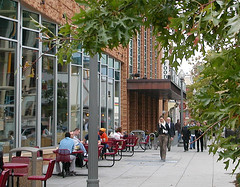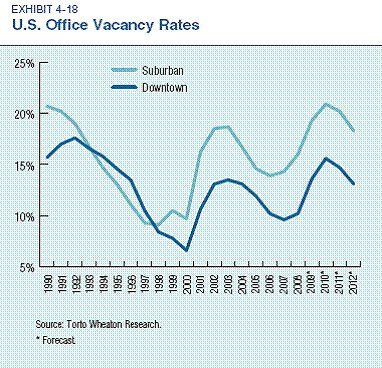Major real estate report: shift to urban living is “fundamental,” outer suburbs may “lack staying power”

Posted November 10, 2009 at 1:37PM
Last week the Urban Land Institute and PriceWaterhouseCoopers released their well-regarded annual analysis, Emerging Trends in Real Estate 2010. The report, which has been published for the last 30 years, aims to advise the industry "on where to invest, what to develop, which markets are hot, and how the economy, and trends in capital flows will affect real estate." Throughout the report's 80 pages, the tone is decidedly grim, with words like "abysmal" and "doom" sprinkled on almost every page. This is not a good time to have your money in real estate.
 That said, it is clear that the authors, who surveyed over 900 industry experts - investors, developers, property companies, lenders, brokers, and consultants - believe that the prospects for investment are much stronger for smart growth than they are for sprawl. This is consistent with other data and analysis from the last couple of years. Here's an excerpt:
That said, it is clear that the authors, who surveyed over 900 industry experts - investors, developers, property companies, lenders, brokers, and consultants - believe that the prospects for investment are much stronger for smart growth than they are for sprawl. This is consistent with other data and analysis from the last couple of years. Here's an excerpt:
"Next-generation projects will orient to infill, urbanizing suburbs, and transit-oriented development. Smaller housing units-close to mass transit, work, and 24-hour amenities-gain favor over large houses on big lots at the suburban edge. People will continue to seek greater convenience and want to reduce energy expenses. Shorter commutes and smaller heating bills make up for higher infill real estate costs."
In the near term, the report advises investors to "buy or hold multifamily" as "the only place with a hint of hope, because of demographic demand" as a large contingent of echo boomers seek their first homes.  In a section titled "markets to watch," the report also advises investors to favor convenient urban office (see graph), retail, entertainment and recreation districts where there are mass transit alternatives to driving. Investors are advised to shy away from, among other things, fringe areas "with long car commutes or where getting a quart of milk means taking a 15- minute drive."
In a section titled "markets to watch," the report also advises investors to favor convenient urban office (see graph), retail, entertainment and recreation districts where there are mass transit alternatives to driving. Investors are advised to shy away from, among other things, fringe areas "with long car commutes or where getting a quart of milk means taking a 15- minute drive."
Observing that the bigger-is-always-better days may be over, the report continues:
"Road congestion, higher energy costs, and climate change concerns combine to alter people's thinking about where they decide to live and work. 'It's a fundamental shift.' The lifestyle cost-of-living equation starts to swing away more dramatically from bigger houses on bigger lots at the suburban edge to greater convenience and efficiencies gained from infill housing closer to work. These homes may be more expensive on a price-per-pound basis, but reduced driving costs and lower heating/cooling bills provide offsets . . . 'near-in suburbs will do well especially if they link to business cores by mass transportation.' Empty nesters and later-marrying echo boomers continue to flock to cities and urbanizing suburban areas. For aging baby boomers, infill apartment or townhouse living means less upkeep and proximity to cultural and entertainment attractions."
The report even questions the continuing supremacy of suburban school systems, noting that increasing numbers of them will start to falter as their supporting tax bases decline. And these themes are underscored in more detailed sections on different sectors of the industry, including apartments, offices, and housing.  For housing, the report cautions investors to "avoid neighborhoods wracked by foreclosures, especially in outer suburbs-these places may have no staying power."
For housing, the report cautions investors to "avoid neighborhoods wracked by foreclosures, especially in outer suburbs-these places may have no staying power."
Another property type cited by the report as having better-than-average prospects is green buildings. The authors cite tenant preferences for reduced energy costs, building systems that produce better air flows and healthier, more pleasant work environments, and the marketing cachet that comes with being green: Citing one interviewee's straightforward admonition that "You'll be stupid not to build green.," the report concludes that operating efficiencies and competitive advantage will be more than worth 'the minimal extra cost.'"
So, while it is impossible to call the report optimistic - on the whole, it is quite the opposite - we can take a little comfort in the fact that even industry analysts focused almost exclusively on dollar signs ("the most highly regarded and widely read forecast report in the real estate industry") see the writing on the wall: no one should bet on sprawl anymore. The future is brightest for development that is smart and green.